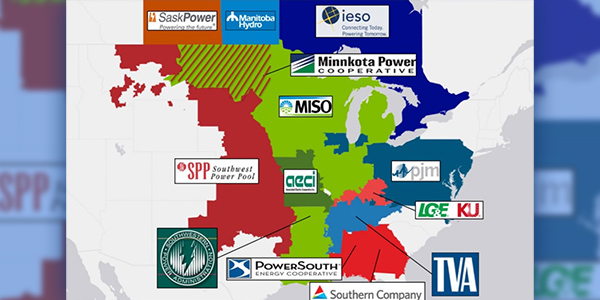MISO, PJM and SPP are within a hair’s breadth of meeting FERC’s transparency requirements around affected-system studies, but both their joint and individual filings on seams issues still need fine-tuning, the commission ruled in a series of orders last week.
The commission last September ruled that the three RTOs’ joint operating agreements do not provide enough clarity on how they handle the study of generator interconnections along their seams. (See FERC Denies Rehearing on Affected System Order.)
FERC’s June 30 orders repeated that theme, directing the RTOs in their joint compliance filings to provide clearer descriptions of how they analyze each other’s systems during respective interconnection studies (ER20-942, ER20-940). The commission found both the MISO-PJM and MISO-SPP joint operating agreements lack indexes that point interconnection customers to business practice manuals that explain the circumstances under which the RTOs will perform an affected-system analysis under an energy resource interconnection service (ERIS) or a network resource interconnection service (NRIS) modeling standard.
FERC gave the RTOs 60 days to add references to the rulesets.
The commission approved other aspects of the seams filings, including details on how the RTOs determine the queue priority of projects and select the ERIS or NRIS modeling standard, as well as how they exchange affected-system information and determine study criteria.
Another Compliance Filing for SPP
The commission found SPP’s proposed revisions partially complied with its 2019 order and directed the RTO to submit a further compliance filing within 60 days. FERC said the RTO’s “Guidelines for the SPP GIP Process and Business Practices” document was not sufficiently detailed, as it lacked the specific section number containing the ERIS and NRIS modeling information (ER20-945).
PJM in Partial Compliance
FERC said PJM had complied with the commission’s directive to detail in its Tariff the time allowed interconnection customers to review affected-system study results and said the 30-day period is consistent with the time given to the RTO’s interconnection customers for reviewing system impact and facility studies.
But it ordered the RTO to make another compliance filing within 60 days, saying it had failed to include where in its manuals or other documents interconnection customers can find details of the modeling PJM uses in studies of ERIS and NRIS requests on its own system (ER20-939).




